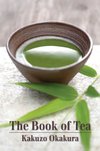Sublime
An inspiration engine for ideas
One of these was the haiku poet Taneda Santoka.
Haruki Murakami • Kafka on the Shore
In Praise of Shadows
The document discusses the preference for shadows, darkness, and muted colors in Japanese culture, highlighting the beauty found in darkness, the use of shadows in architecture, art, and aesthetics.
LinkSo the first one is this Japanese novelist, Junichiro Tanizaki’s 1933 essay, “In Praise of Shadows.” And this is a very small book, or a very long essay, in which Tanizaki kind of muses on his own taste, and why he designed his house in a certain way, and why he chooses food in a certain way or installs lamps in a certain way. And the point at... See more
‘The Ezra Klein Show’ • How to Discover Your Own Taste

zelkova tree
Haruki Murakami • Norwegian Wood


It was said by Japan’s most famous poet, Basho, that “a poem that suggests 70–80 percent of its subject may be good, but a poem that only suggests 50–60 percent of the subject will always retain its intrigue.”
Andrew Juniper • Wabi Sabi: The Japanese Art of Impermanence
In Praise of Shadows
The essay explores the cultural appreciation of shadows, darkness, and subdued beauty in traditional Japanese architecture, art, and everyday objects, contrasting it with Western ideals of brightness and clarity.
neeta.works